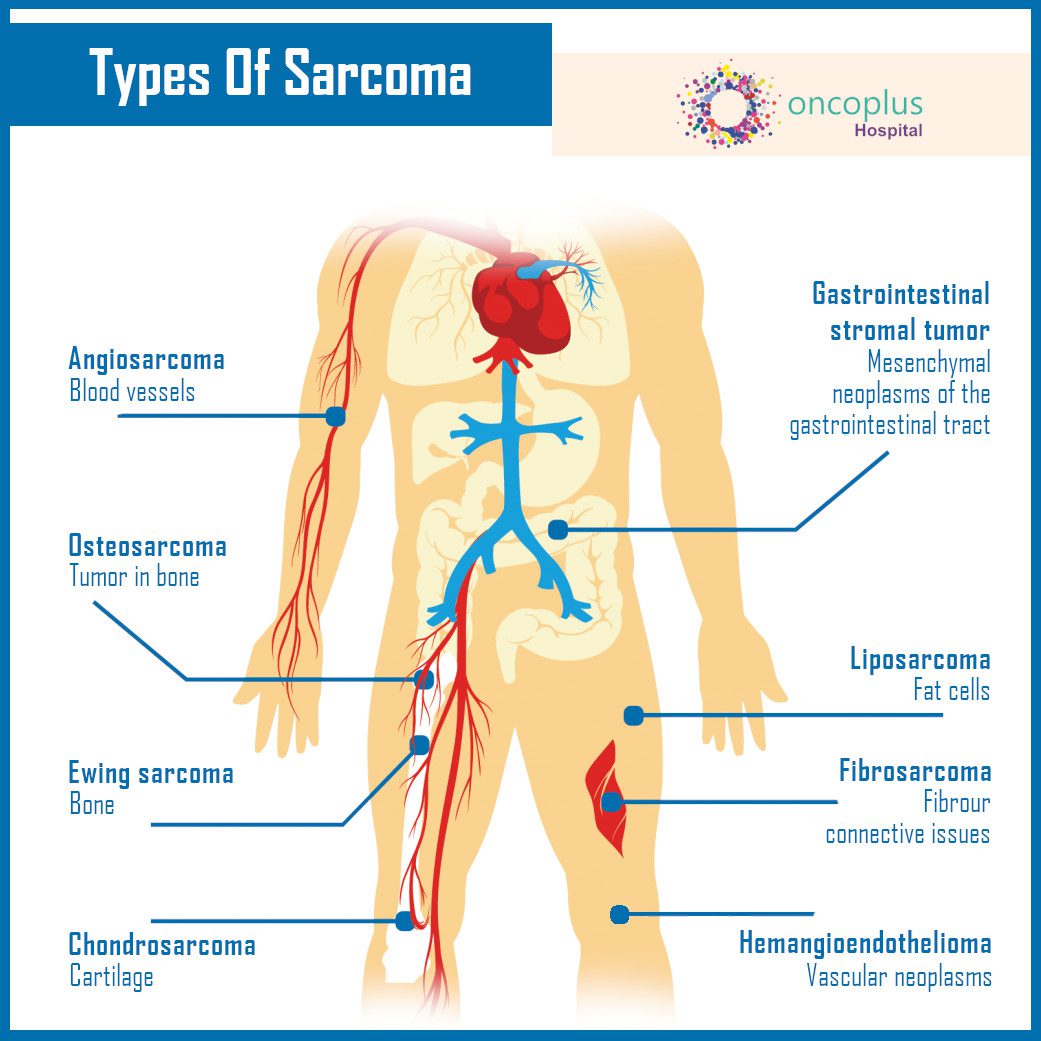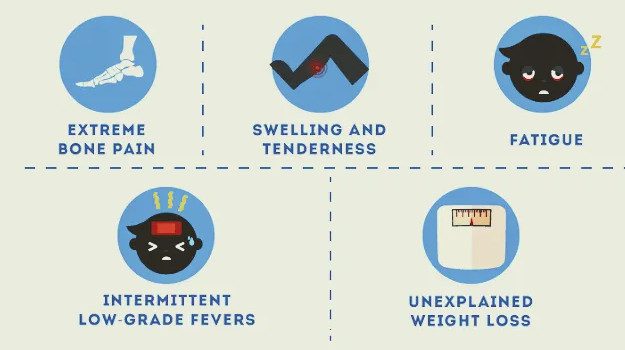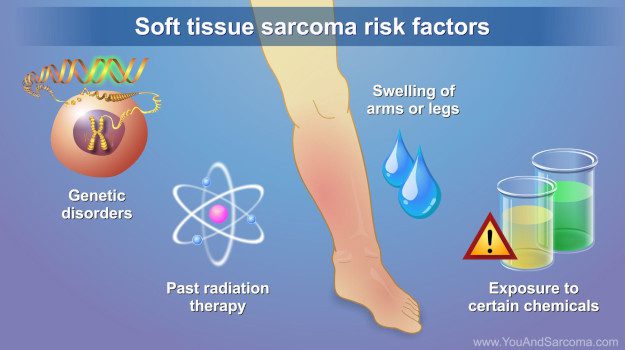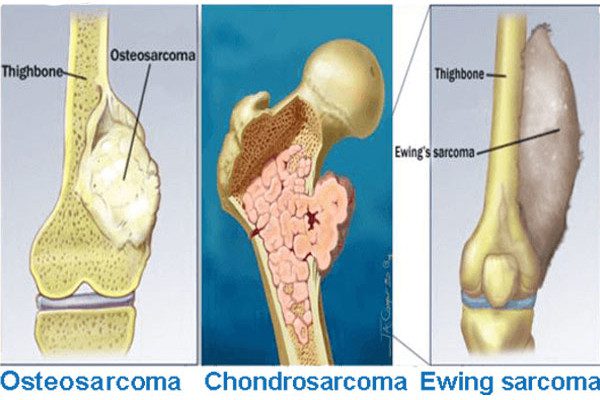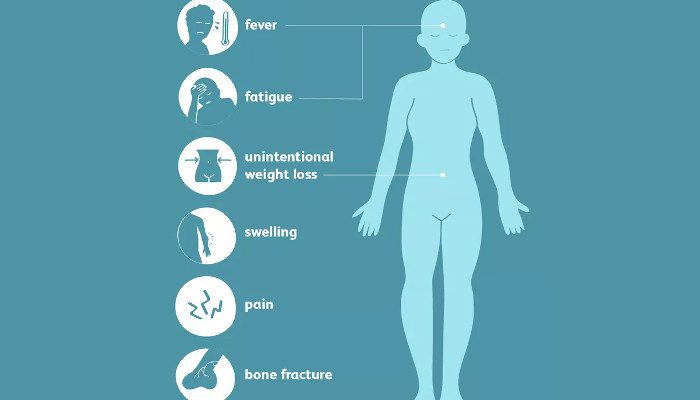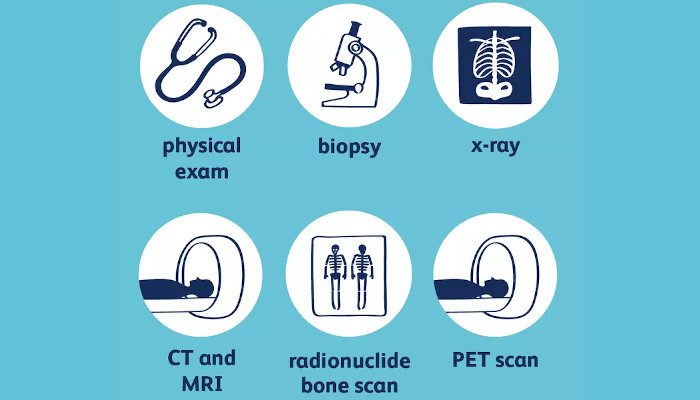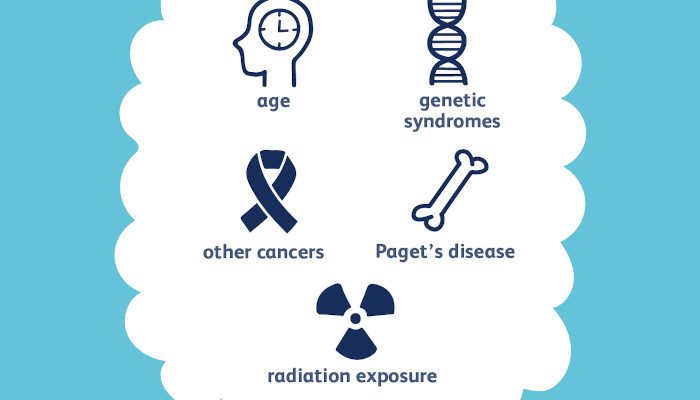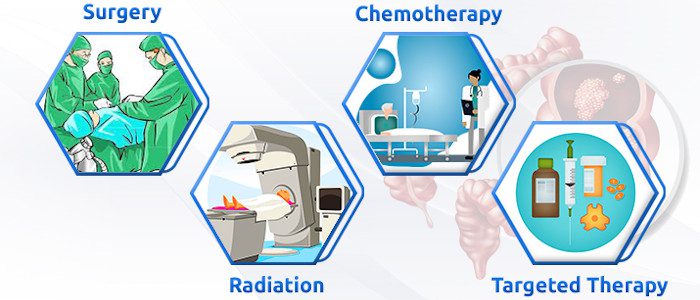When it comes to juvenile cancers, pediatric sarcoma and bone cancer present particular difficulties. Because of their unique qualities and the delicate nature of treating young patients, many rare but dangerous diseases require specialist attention. Here, we will examine the subtleties of treating bone cancer, delve into the complexities of pediatric sarcoma cancer, and illuminate the always-changing strategies medical professionals use to take on these tough foes in this blog post.
Recognizing Pediatric Sarcoma:
Children and adolescents may develop pediatric sarcoma, a rare type of cancer, in their soft tissues or bones. This cancer includes a wide range of tumor types, each with unique difficulties. The difficulty of making an early diagnosis, which frequently results in a delayed start of treatment, is one of the main challenges in treating pediatric sarcoma. This diagnostic problem is exacerbated by the rarity of these tumors and the variety of symptoms, underscoring the need for increased awareness among parents and healthcare practitioners.
Significance of Early Identification:
The fight against pediatric sarcoma continues to be based on early identification. Parents and caregivers are essential when it comes to seeing possible warning signals like chronic discomfort, swelling, or unexplained tumors. Early intervention can have a major impact on the prognosis, highlighting the significance of routine pediatric examinations and keeping lines of communication open with medical providers.
Pediatric Patients with Bone Cancer:
As a subtype of pediatric sarcoma, bone cancer has its own special difficulties. The two most prevalent forms of bone cancer in children that affect long bones, such as the arms and legs, are osteosarcoma and Ewing sarcoma. Because of their aggressive nature, treatment for these malignancies must be interdisciplinary, involving radiation oncologists, pediatric oncologists, and orthopedic surgeons.
Therapy Strategies for Bone Cancer and Pediatric Sarcoma:
As medical science and technology develop, do the therapy options for bone cancer and pediatric sarcoma. The foundation for treating these tumors continues to be traditional methods such as radiation therapy, chemotherapy, and surgery. Nonetheless, newer forms of treatment, such as immunotherapy and targeted medicines, present encouraging paths toward more focused and successful interventions.
- Surgical Intervention: When it comes to treating pediatric sarcoma and bone cancer, surgery is essential. The intention is to remove the tumor as much as possible while leaving as much healthy tissue intact. Modern surgical methods, such as limb-sparing surgery, try to keep young patients functioning and enjoying their lives as much as possible, lessening the negative effects of treatment on their long-term health.
- Chemotherapy: Chemotherapy is still a standard treatment for bone cancer and pediatric sarcoma. Chemotherapy regimens that are specifically tailored aim to target cancer cells with the least amount of damage to healthy tissues. The difficulty is in striking a balance between the strong anti-cancer effects and any possible adverse consequences, particularly in children’s developing bodies.
Read More Blog: What Are The Things You Should Know Before Starting Chemotherapy?
- Radiation Therapy: High-energy rays are used in radiation therapy to target and kill cancer cells. It is critical to apply radiation with precision, especially in pediatric instances where it is essential to minimize damage to adjacent healthy tissues. Proton therapy is one example of an advanced technology that offers greater precision and less long-term treatment impact on growing tissues.
- Targeted Therapies: Targeted therapies interfere with the growth signals of cancer cells by focusing on particular molecular defects within the cells. Targeted medicines have promise in treating specific genetic abnormalities that propel tumor growth in the context of pediatric sarcoma. These treatments are still in the early phases of investigation, which emphasizes the continuous need for study and clinical trials.
- Immunotherapy: Immunotherapy stimulates the immune system of the body to identify and combat cancerous cells. Although it has demonstrated impressive results in treating certain adult cancers, research is currently being done on its use in treating pediatric sarcoma and bone cancer. The prospects for the future are bright when the potential of immunotherapy for treating childhood cancer is realized.
Read More Blog: How Does Immunotherapy Help In The Fight Against Cancer?
Value of Supportive Care:
In addition to providing medical care, children patients with sarcoma and bone cancer require holistic care that attends to their emotional and psychological needs. Supportive care services are essential in assisting children and their families in overcoming the obstacles related to cancer treatment. These services include counseling, palliative care, and survivorship programs.
In summary, treatment for bone cancer and pediatric sarcoma must be thorough and dynamic due to their unique problems. For young patients facing these powerful opponents, the environment is becoming increasingly promising thanks to early detection, advancements in surgical procedures, targeted medicines, and immunotherapy. In order to give children and adolescents affected by pediatric sarcoma and bone cancer hope and improve their prognosis, healthcare professionals, researchers, and support networks must work together while research into these complicated diseases continues. For the best bone cancer treatment, you should choose Oncoplus and experience world-class care that is tailored to your specific needs. At Oncoplus, we’re dedicated to giving patients with bone cancer the finest care possible. We have a team of highly skilled oncologists and state-of-the-art facilities.
July is Bone Cancer Awareness Month! During July, we join hands to raise awareness, support research, and inspire hope for bone cancer survivors. So, let’s work together to raise awareness of this illness, inform others, and work towards a time when no one will have to battle bone cancer alone. Bone cancer is a relatively uncommon type of cancer that manifests inside the bones. Although it can affect any bone in the body, the long bones of the arms and legs are most frequently affected. As the signs of this type of cancer might match those of other disorders, it can be challenging to identify it early. For prompt intervention and better results, it is essential to understand the symptoms and signs of bone cancer and the various bone cancer treatments. Here in this blog, we will go through the signs and symptoms of bone cancer and practical cures.
Knowledge of Bone Cancer:
Primary and secondary bone cancer are the two basic types into which bone cancer can be divided. While secondary bone cancer, sometimes called metastatic bone cancer, spreads to the bone from other body regions, including the breast, lung, or prostate, primary bone cancer begins within the bone itself.
Depending on the location, stage, and kind of disease, the symptoms of bone cancer can change. Bone cancer may not exhibit any signs in its early stages. However, the following symptoms could appear when the tumour enlarges:
- Pain: Pain is one of the most common signs of bone cancer is persistent, localized bone pain that is worse at night or after exercise. Although the pain may begin as being sporadic, it eventually becomes consistent as the tumour grows.
- Lumps and Swelling: The affected area may experience obvious lumps or swelling and the lump could be warm and painful to the touch.
- Bone Fractures: Cancer-related bone weakness increases the chance of fractures, even from minor trauma.
- Fatigue and Weight Loss: As with the majority of cancers, bone cancer can result in weariness and accidental weight loss.
- Motion Restriction: If a tumour is close to a joint, it may limit motion and create stiffness.
Options for Effective Treatment:
The method of treating bone cancer depends on a number of variables, including the disease’s type, stage, and location, as well as the patient’s general condition. For treating cancer, a multidisciplinary team of oncologists, orthopaedic surgeons, radiation oncologists, and other medical specialists usually works together to create a customized treatment plan. The following are some of the most typical bone cancer treatments:
- Surgery: Surgery is an essential component in treating bone cancer. The main objective is to remove the malignant tumour and any nearby tissues that have been harmed while maintaining the limb’s integrity and functionality. Amputation may occasionally be required if the tumour is substantial or the nearby nerves and blood vessels are harmed.
- Radiation therapy: Radiation therapy uses high-energy beams to shrink tumours and kill cancer cells. It is frequently used either before surgery to reduce the tumour or after to eradicate any cancer cells that may have persisted. Additionally, radiation therapy might lessen discomfort and enhance the general quality of life.
- Chemotherapy: It is the method of eliminating cancer cells from the body’s tissues by applying drugs. It can be used either before surgery to reduce the tumour or after to get rid of any cancer cells that might have survived. In cases of advanced or metastatic bone cancer, chemotherapy is also applied.
- Targeted Therapy: Therapy that directly targets cancer cells while sparing healthy cells is known as ‘targeted therapy’. Osteosarcoma and Ewing sarcoma are two examples of bone cancers that may respond well to this treatment method.
- Immunotherapy: Immunotherapy strengthens the immune system’s capacity to identify and combat cancer cells in the body. Immunotherapy is a promising treatment option for bone cancer, even if research is still in its early phases. Also, it can be combined with other strategies for better treatment.
In conclusion, excellent treatment outcomes depend on the early identification of bone cancer. You must get medical advice right away if you have chronic bone pain, swelling, or any other unsettling signs. Combinations of surgery, radiation therapy, chemotherapy, targeted therapy, and cutting-edge immunotherapy are frequently used to treat bone cancer. An individual’s ability to actively participate in their healthcare and increase the likelihood of a positive prognosis depends on how well-informed they are about the symptoms and available treatments. If you or your loved ones are suffering from bone cancer and want to fight against it, you should consult Oncoplus, the best hospital for bone cancer treatment. We take great satisfaction in being the greatest hospital for treating patients worldwide and battling this difficult illness. We provide individualized and comprehensive care that raises the bar for cancer thanks to state-of-the-art equipment and a team of recognized doctors. We can diagnose, treat, and monitor bone cancer with unmatched precision because our cutting-edge facilities give patients the best possible chance of recovery. Oncoplus walks you through every step of your recovery journey by fusing ground-breaking science with caring support. You may rely on us to provide unmatched knowledge and a better future.
Bone marrow is a soft, spongy tissue found in the center of the majority of bones. Multiple myeloma cancer, leukemia, and lymphoma are all cancers that can develop in the bone marrow. Stem cells in bone marrow develop into various types of blood cells, including:
Red blood cells transport oxygen and carbon dioxide throughout the body;
white blood cells fight infection; and platelets aid in blood clotting.
When the body requires these blood cells, such as when old blood cells die, the body usually produces them. When these cells replicate too quickly, bone marrow cancer develops.
In this blog, we will look at the various types of bone marrow cancer, as well as their symptoms and treatment options.
- Types
Doctors identify bone marrow cancer based on the type of cell it affects in the body:
- Multiple Myeloma
Multiple myeloma is a cancer that develops in the plasma cells of the bone marrow. Plasma cells are important components of the immune system because they produce antibodies that the body requires to fight foreign bacteria.
- Leukemia
Cancers of the white blood cells are known as leukemias. These cancers can begin in other types of blood cells and then spread, or metastasize, into the bone marrow. Acute leukemias are cancers that grow quickly, whereas chronic leukemias grow slowly.
- Lymphoma
Cancer develops in the lymphocytes that circulate in the blood and lymph tissue after being produced in the bone marrow in people with lymphoma. Lymphoma can develop in a variety of locations throughout the body, including the bone marrow.
- TREATMENT
The type of treatment for bone marrow cancer is determined by a variety of factors, including the extent and type of cancer, as well as the patient’s age and overall health. A cancer care team will tailor treatment to the individual’s healthcare requirements.
- Chemotherapy
Chemotherapy employs medications to either kill or prevent cancer cells from replicating. Chemotherapy treatment comes in a variety of forms. Chemotherapy is frequently administered by injection or via an intravenous (IV) drip by a cancer team. They will, however, occasionally give the individual oral medications instead.
- Radiation therapy
This treatment involves delivering radiation directly to cancer cells in order to prevent them from multiplying and spreading. An oncologist, a cancer specialist, may use a machine that directs a high-powered radiation beam at the affected bone marrow.
If the cancer has spread to other parts of the body, the oncologist may advise total body irradiation. A specialized machine will be used by the cancer care team to immerse an individual in radiation. This irradiation is frequently used in conjunction with chemotherapy drugs as a preparation for a bone marrow transplant.
- Stem cell treatment
In some cases, a stem cell transplant may be an option, but not everyone with bone marrow cancer is a candidate for this type of treatment. Before the stem cells are administered via IV, a person will receive high doses of chemotherapy or radiation therapy to kill the existing bone marrow.
Bone marrow is a soft, spongy tissue found in the center of the majority of bones. Multiple myeloma, leukemia, and lymphoma are all cancers that can develop in the bone marrow. Stem cells in bone marrow develop into various types of blood cells, including:
Red blood cells transport oxygen and carbon dioxide throughout the body; white blood cells fight infection; and platelets aid in blood clotting.
When the body requires these blood cells, such as when old blood cells die, the body usually produces them. When these cells replicate too quickly, bone marrow cancer develops.
In this blog, we will look at the various types of bone marrow cancer, as well as their symptoms and treatment options.
Types of bone marrow cancer
Doctors identify this types of cancer based on the type of cell it affects in the body:
- Multiple Myeloma
Multiple myeloma is a cancer that develops in the plasma cells of the bone marrow. Plasma cells are important components of the immune system because they produce antibodies that the body requires to fight foreign bacteria.
- Leukemia
Cancers of the white blood cells are known as leukemias. These cancers can begin in other types of blood cells and then spread, or metastasize, into the bone marrow. Acute leukemias are cancers that grow quickly, whereas chronic leukemias grow slowly.
- Lymphoma
Cancer develops in the lymphocytes that circulate in the blood and lymph tissue after being produced in the bone marrow in people with lymphoma. Lymphoma can develop in a variety of locations throughout the body, including the bone marrow.
Treatment of bone marrow cancer
The type of treatment for this type of cancer is determined by a variety of factors, including the extent and type of cancer, as well as the patient’s age and overall health. A cancer care team will tailor treatment to the individual’s healthcare requirements.
- Chemotherapy
Chemotherapy employs medications to either kill or prevent cancer cells from replicating. Chemotherapy treatment comes in a variety of forms. Chemotherapy is frequently administered by injection or via an intravenous (IV) drip by a cancer team. They will, however, occasionally give the individual oral medications instead.
- Radiation therapy
This treatment involves delivering radiation directly to cancer cells in order to prevent them from multiplying and spreading. An oncologist, a cancer specialist, may use a machine that directs a high-powered radiation beam at the affected bone marrow.
If the cancer has spread to other parts of the body, the oncologist may advise total body irradiation. A specialized machine will be used by the cancer care team to immerse an individual in radiation. This irradiation is frequently used in conjunction with chemotherapy drugs as a preparation for a bone marrow transplant.
- Stem cell treatment
In some cases, a stem cell transplant may be an option, but not everyone with bone marrow cancer is a candidate for this type of treatment. Before the stem cells are administered via IV, a person will receive high doses of chemotherapy or radiation therapy to kill the existing bone marrow.
Get the second opinion from the best Cancer doctors in Delhi
Early detection and treatment of bone cancer is important in achieving cure rates of 60 to 70%. However, the cost of treatment can be expensive, ranging anywhere from 20,000 to three lakhs. These costs include the cost of chemotherapy drugs and any implants that need to be implanted during surgery. Only a few people can afford the entire course of treatment. That’s where the availability of affordable, high quality clinics in India comes into play.
The first step towards finding a good clinic is to find a medical school in India. Indian colleges and hospitals are highly regarded. Moreover, the Indian government subsidizes the cost of medical treatment for people with bone cancer. As a patient, you can avail government benefits for health care services. The cost of a hospital stay can be more than a thousand dollars. But, it is still worth it because many cancer treatments can save your life.
One of the best ways to find a good clinic is by reading online reviews. There are several websites that offer detailed information about clinics. Checking out reviews of several different clinics is an excellent way to find the right one for your specific needs. A quality hospital will use the latest technology to deliver radiation to your bones, limiting any damage to healthy tissue. The treatment may also be combined with surgery to enhance the outcome. If all else fails, you can even go for a bone transplant or an osteosarcoma.
The most common symptom of bone cancer is persistent pain or swelling in the area of the tumor. This pain may increase over time and may not improve despite rest. Symptoms may also increase with age and can be difficult to treat, affecting daily activities and quality of life. Additionally, the cancer may cause weight loss and decreased appetite. The symptoms will usually be easily treatable with blood tests, X-ray, or MRI scan.
The most common symptom of bone cancer is pain in the affected area. This pain may increase with activity or at night. It can affect the ability to move the affected limb and cause fractures. Older people should be checked for this condition by a healthcare professional. They should visit a hospital that specializes in treating bone cancer. They should also get a CT scan and PET-CT scan to make sure the disease isn’t spreading to other parts of their body.
The diagnosis of bone tumors can be challenging. The earliest stage of the disease is stage I or II. The survival rate for people with this type of cancer is 70% to 75%. If the cancer has spread to other parts of the body, the risk of survival is higher. In stage III, the disease may spread to the lungs and other body sites. There are two stages of the disease. In the first stage, the patient will have a low chance of surviving the disease.
Patients with this disease should keep their fingers moving. In stage II, the tumor is not very large and has a low grade. In stage III, the tumor has already spread to the lungs and lymph nodes. The most advanced stage is called stage IV. Amputation is the only option that cannot be used for this type of cancer. Amputation is a last resort for patients with this disease. Amputation is the only choice left.
During the first stage, the cancer can spread to other parts of the body. In this case, the patient will undergo a surgery where the tumour is removed in part of the lung. In the case of stage IV, the whole lung is removed. The operation should be performed in a way that the patient can breathe after the operation. Once diagnosed, the surgeon will perform a procedure to remove the tumour. It is important to seek out treatment for bone cancer at the earliest opportunity.
Stage IV is often the first step in treating the disease. In stage IV, the patient will be given chemotherapy to help the patient recover. In stage IV, the patient will undergo surgery to remove the affected part of the lung. During this phase, the patient will undergo physiotherapy sessions and occupational therapy to ensure that they are not in pain or have difficulty breathing. The cancer will spread to other organs and may also return after treatment.
Bone cancer can take place anywhere in the body, it normally affects the bones in the pelvis area or legs and arms, though cancer is quite rare it accounts to 1 percent of all cancers. Studies state that the noncancerous bone tumors are much more common than cancerous ones, the term doesn’t comprise of cancers, which begin somewhere else in the body and metastasize or spread to the bones, such cancers are termed for wherever they started in the body, for instance lung cancer, which spreads to the bones.
A few cancers take place only in children and others in adults. Oncologists normally surgically remove the cancer, but also use a combination of chemo and radiation therapy in treatment options. The option to use surgery, chemo or radiation therapy is purely based on the type and stage of bone cancer being treated. Consult with our specialist at Oncoplus Hospital, Defence Colony, if you experience symptoms such as unexplained weight loss, fatigue, bone pain, swelling and tenderness near the affected area and enfeebled bone, leading to stress fractures.
The reason for cancers of this type is not known, a few bone cancers have been linked to hereditary factors, while others are associated with previous radiation exposure. These cancers can be classified into different types based on the type of cell where the cancer began.
A few common kinds of bone cancer include; Osteosarcoma, which is the most common form of bone cancer. In this tumor, the cancerous cells produce bone, and occurs mostly among children and young adults, in the bones of the leg or arm. Chondrosarcoma is the second most common form of bone cancer in which the cancerous cells produce cartilage. It normally happens in the pelvis, legs or arms in middle-aged and older adults and Ewing Sarcoma tumors are commonly found in the pelvis, legs or arms of young adults and children.
It’s not clear what causes bone cancer, but experts opine a few factors, which are associated with an increased risk, including; Inherited genetic syndromes, Paget’s disease of bone and Radiation therapy for cancer. Exposure to radiation, which is given during radiation therapy for cancer, increases the risk of bone cancer in the future.
The treatment for this cancer (also known as bone sarcoma) depends on numerous factors including, the grade, type, location and size of the cancer as well the medical history, symptoms and personal preferences for treatment. Ewing sarcoma and Osteosarcoma can be treated with grouping chemotherapy, surgery and/or radiotherapy. Chondrosarcoma is normally treated with surgery alone. Learn more about cancers tele Consult with our best cancer doctors in India at Oncoplus Hospital, Defence Colony, New Delhi, write to us info@oncoplus.co.in or call us at +91 85889 09091 to book an appointment.
Cancer begins when cells grow out of control. Cells in any part of the body can become cancerous and spread (metastasise) to other parts.
Bone cancer is uncommon and starts when cells in the bone start to grow abnormally out of control. To understand bone cancer, it helps to know a little about normal bone tissue.
Most bones start out as softer, more flexible forms of tissue called cartilage and this cartilage later forms bones. In adults, cartilage is found at the end of some bones.
The bone itself has 2 kinds of cells.
- Osteoblasts – cells that lay down new bone.
- Osteoclasts – cells that dissolve old bone.
Bones look as if they don’t change much, but they are very active. New bone is always forming while old bone is dissolving. This helps keeps bones strong. There are some other cells in the bone marrow like plasma cells and fibroblasts.
Any of these bone cells can develop into cancer.
Primary bone cancers versus bone metastasis
Cancers that originate in the bones are called primary bone cancers.
In most cases of adults with any bone cancer types, cancer starts somewhere else and then spreads to the bones: this is called bone metastasis and this can develop from different types of advanced cancers like breast, lung, and prostate cancer. If you observe cancer cells in the bone with a microscope; you’ll find they look like the cancer cells in the organ they came from.
Types of primary bone cancers
Primary bone cancers (cancers that begin in the bone itself) are also called bone sarcomas.
There are many kinds of primary bone cancer and some of them are rare.
Osteosarcoma
Osteosarcoma (or osteogenic sarcoma) is the most commonly found primary bone cancer. It starts in an early form of bone cells and often occurs in young people between the 10 and 30, whereas about 1 in 10 osteosarcomas develop in people above 60: it is very rare in middle-aged people, and is more common in men. These develop mostly in the bones of the arms, legs, or pelvis.
Ewing tumour (Ewing sarcoma)
These are the second most common type of primary bone cancer found in children, teens, and young adults, and the third most common bone cancer. These rarely occur in adults older than 30. Most Ewing tumours develop in the bones, but they can start from other tissues and organs. The most common sites cancer are the hip (pelvic) bones, the bones in the chest wall (the ribs or shoulder blades), the bones of the spine, and the long bones of the legs.
Chondrosarcoma
Chondrosarcoma begins in early forms of cartilage cells and is the second most common primary bone cancer. It’s uncommon in people under 20, and the risk of chondrosarcoma rises as people get older.
Chondrosarcomas can begin in any place where there’s cartilage. Most develop in bones like the pelvic (hip) bones, legs, or arms and some others begin in the trachea, larynx, chest wall, shoulder blades, ribs, or skull.
High-grade undifferentiated pleomorphic sarcoma (UPS) of bone
This was previously known as malignant fibrous histiocytoma (MFH) of bone. Undifferentiated pleomorphic sarcoma (UPS) usually starts in soft tissues (connective tissues like ligaments, tendons, fat, and muscle). It’s rarer in bones, but if it does occur, it usually afflicts the legs (around the knees) or arms. This cancer mostly occurs in elderly and middle-aged adults and is very rare in children. It tends to grow locally, but sometimes it can spread to other parts of the body.
Fibrosarcoma of bone
Another from types of bone cancer that develops more often in soft tissues than in bones usually occurs in middle-aged adults. Bones in the legs, arms, and jaw are mostly affected.
Giant cell tumor of bone
This type of primary bone cancer can be benign (non-cancerous) or malignant and these tumors are most common in people between their 20s and 30s.
Giant cell bone tumours typically hit the legs (usually near the knees) or arms. They don’t usually spread to distant parts of the body, but after surgery they can recur (even more than once) in the place where they began. With every recurrence, the tumour gets more likely to spread to other parts of the body (most often to the lungs). Rarely will a malignant giant cell bone tumour spread to other parts of the body without first recurring locally.
Chordoma
This uncommon type of bone tumour occurs in the bones of the spine, mostly at the bottom of the spine (sacrum) or the base of the skull. It happens most often to adults older than 30 and is twice as common in men as in women and very rarely does it occur in children.
Chordomas usually grow slowly and don’t spread to other parts of the body and often come back in the same area if they are not removed completely.
Check the best hospital in Delhi for bone cancer
The various types and causes of bone cancer explained…
Though rarer than most types of cancer, the risk is highest for those between 10 and 30 years of age, particularly during a teenage growth spurt. This could mean a link between rapid bone growth and the risk of developing tumors. The risk does decrease with middle age but again rises in older adults (usually over the age of 60).
We’ve constantly provided the best treatment for cancer in South Delhi for the best part of two decades, and we also provide treatment for bone cancer in Delhi, with our oncology departments are comprised of the best cancer doctors in Delhi. If you are looking for treatment for bone cancer in Delhi, this article could be of some help.
Bone cancer happens when a tumor forms in a bone. A tumor could be malignant; it’s growing aggressively and spreading.
A malignant tumor is often referred to as cancerous. Cancer that begins in the bones is rare.
Types
Primary bone cancers are the most serious of all bone cancers. They form directly in the bones or surrounding tissue.
Cancer can also spread ( or metastasize), from another part of your body towards your bones. This is secondary bone cancer, and this type is more prevalent than primary.
The Common types of primary of bone cancer are:
Multiple myeloma (MM)
Multiple myeloma is the most prevalent form of bone cancer, this happens when cells grow in the bone marrow and cause tumors in other bones. MM will usually affect older adults.
Among bone cancers, MM has one of the best outlooks, and many people who have it www won’t need treatment.
Osteosarcoma (Osteogenic sarcoma)
Osteosarcoma generally affects children and adolescents, but it can also include adults. It usually originates at the tips of the long bones in the arms and legs.
Osteosarcoma may also start in the hips, shoulders, or other locations. It affects the hard tissue that provides the outer layer of your bones.
Chondrosarcoma
Chondrosarcoma can occur in the pelvis, thigh areas, and shoulders in older adults.
It forms in the tough connective tissue between your bones. This is the second most common primary cancer.
Ewing’s sarcoma
A much rare cancer that either begins in the soft tissues surrounding the bones or directly in the bones of children and young adults.
The long bones of the body — such as the arms and legs — and the pelvis are commonly affected.
What are the symptoms of bone cancer?
The symptoms of bone cancer are:
- pain and swelling in bones
- tangible hard mass formation in the long bones of the limbs
- fatigue or tiredness
Less common symptoms include:
- bones that break easily
- sudden weight loss
What causes?
The exact cause of bone cancer isn’t known to us, but there are some factors that may increase the chances.
These are:
Abnormal cellular growth
Healthy cells continually divide and replace older cells. After completing this process they die. Abnormal cells, however, continue living. They start forming masses of tissue that turn into tumors.
Radiation therapy
Radiation therapy, which kills dangerous cancer cells, can be used to treat bone cancer. However, osteosarcoma may form in some people who receive the treatment. The use of high doses of radiation may be a factor in this development.
Who is at risk ?
The following may be risk factors for bone cancer:
- having a family history of cancer, especially bone cancer
- having received radiation treatment or therapy in the past
- having Paget’s disease, which is a condition that causes the bones to break down and then grow back abnormally
- currently or previously having had multiple tumors in the cartilage, which is the connective tissue in the bone
